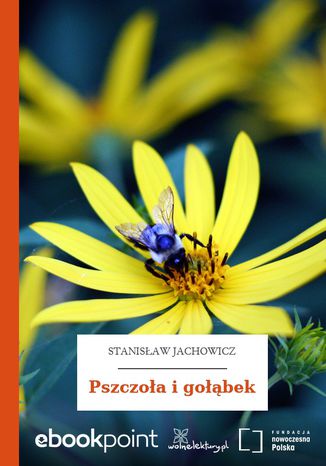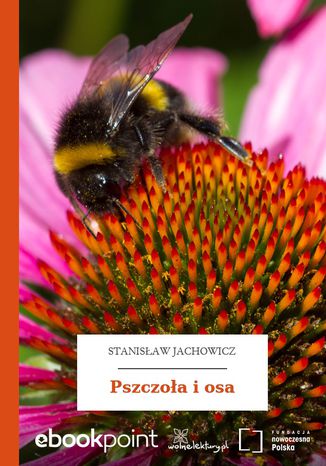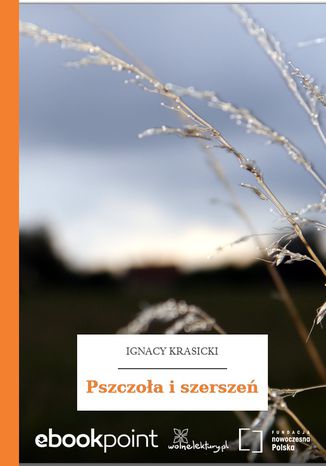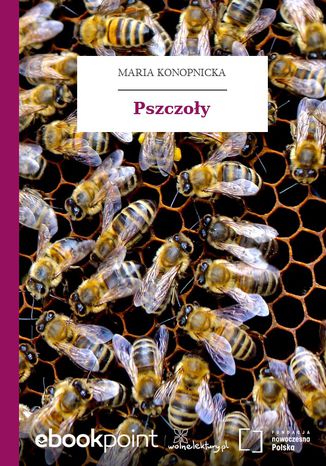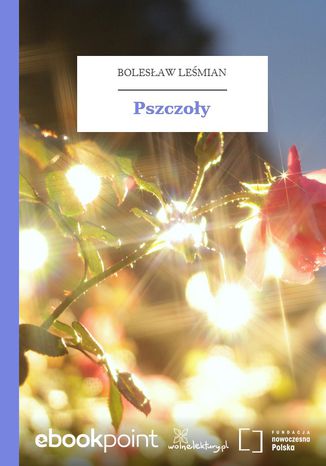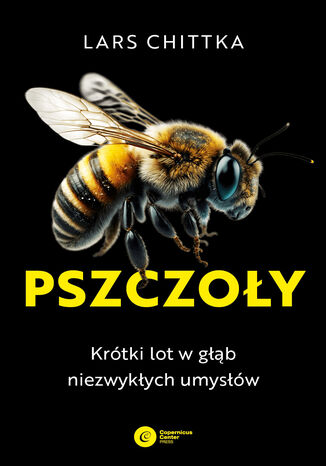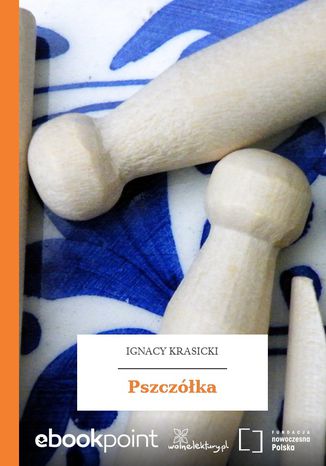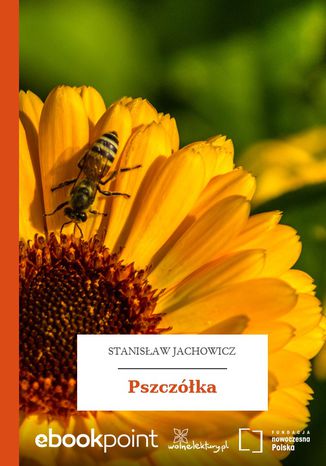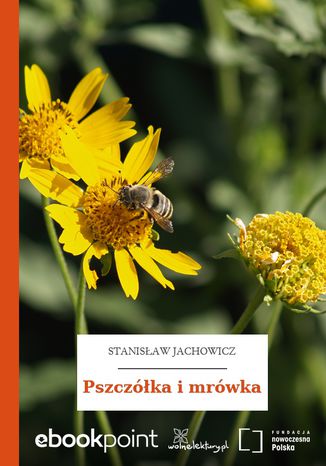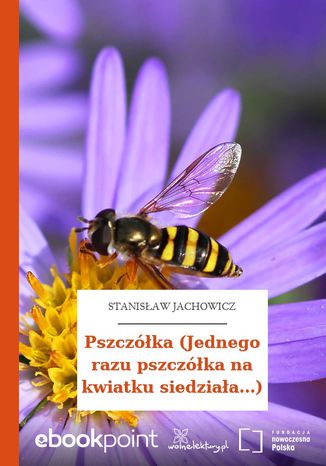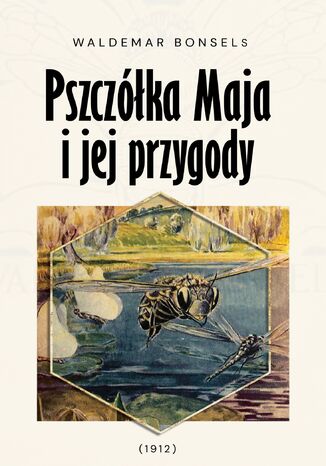Kategorie
Ebooki
-
Biznes i ekonomia
- Bitcoin
- Bizneswoman
- Coaching
- Controlling
- E-biznes
- Ekonomia
- Finanse
- Giełda i inwestycje
- Kompetencje osobiste
- Komputer w biurze
- Komunikacja i negocjacje
- Mała firma
- Marketing
- Motywacja
- Multimedialne szkolenia
- Nieruchomości
- Perswazja i NLP
- Podatki
- Polityka społeczna
- Poradniki
- Prezentacje
- Przywództwo
- Public Relation
- Raporty, analizy
- Sekret
- Social Media
- Sprzedaż
- Start-up
- Twoja kariera
- Zarządzanie
- Zarządzanie projektami
- Zasoby ludzkie (HR)
-
Dla dzieci
-
Dla młodzieży
-
Edukacja
-
Encyklopedie, słowniki
-
E-prasa
- Architektura i wnętrza
- BHP
- Biznes i Ekonomia
- Dom i ogród
- E-Biznes
- Ekonomia i finanse
- Ezoteryka
- Finanse
- Finanse osobiste
- Firma
- Fotografia
- Informatyka
- Kadry i płace
- Kobieca
- Komputery, Excel
- Księgowość
- Kultura i literatura
- Naukowe i akademickie
- Ochrona środowiska
- Opiniotwórcze
- Oświata
- Podatki
- Podróże
- Psychologia
- Religia
- Rolnictwo
- Rynek książki i prasy
- Transport i Spedycja
- Zdrowie i uroda
-
Historia
-
Informatyka
- Aplikacje biurowe
- Bazy danych
- Bioinformatyka
- Biznes IT
- CAD/CAM
- Digital Lifestyle
- DTP
- Elektronika
- Fotografia cyfrowa
- Grafika komputerowa
- Gry
- Hacking
- Hardware
- IT w ekonomii
- Pakiety naukowe
- Podręczniki szkolne
- Podstawy komputera
- Programowanie
- Programowanie mobilne
- Serwery internetowe
- Sieci komputerowe
- Start-up
- Systemy operacyjne
- Sztuczna inteligencja
- Technologia dla dzieci
- Webmasterstwo
-
Inne
-
Języki obce
-
Kultura i sztuka
-
Lektury szkolne
-
Literatura
- Antologie
- Ballada
- Biografie i autobiografie
- Dla dorosłych
- Dramat
- Dzienniki, pamiętniki, listy
- Epos, epopeja
- Esej
- Fantastyka i science-fiction
- Felietony
- Fikcja
- Humor, satyra
- Inne
- Klasyczna
- Kryminał
- Literatura faktu
- Literatura piękna
- Mity i legendy
- Nobliści
- Nowele
- Obyczajowa
- Okultyzm i magia
- Opowiadania
- Pamiętniki
- Podróże
- Poemat
- Poezja
- Polityka
- Popularnonaukowa
- Powieść
- Powieść historyczna
- Proza
- Przygodowa
- Publicystyka
- Reportaż
- Romans i literatura obyczajowa
- Sensacja
- Thriller, Horror
- Wywiady i wspomnienia
-
Nauki przyrodnicze
-
Nauki społeczne
-
Podręczniki szkolne
-
Popularnonaukowe i akademickie
- Archeologia
- Bibliotekoznawstwo
- Filmoznawstwo
- Filologia
- Filologia polska
- Filozofia
- Finanse i bankowość
- Geografia
- Gospodarka
- Handel. Gospodarka światowa
- Historia i archeologia
- Historia sztuki i architektury
- Kulturoznawstwo
- Lingwistyka
- Literaturoznawstwo
- Logistyka
- Matematyka
- Medycyna
- Nauki humanistyczne
- Pedagogika
- Pomoce naukowe
- Popularnonaukowa
- Pozostałe
- Psychologia
- Socjologia
- Teatrologia
- Teologia
- Teorie i nauki ekonomiczne
- Transport i spedycja
- Wychowanie fizyczne
- Zarządzanie i marketing
-
Poradniki
-
Poradniki do gier
-
Poradniki zawodowe i specjalistyczne
-
Prawo
- BHP
- Historia
- Kodeks drogowy. Prawo jazdy
- Nauki prawne
- Ochrona zdrowia
- Ogólne, kompendium wiedzy
- Podręczniki akademickie
- Pozostałe
- Prawo budowlane i lokalowe
- Prawo cywilne
- Prawo finansowe
- Prawo gospodarcze
- Prawo gospodarcze i handlowe
- Prawo karne
- Prawo karne. Przestępstwa karne. Kryminologia
- Prawo międzynarodowe
- Prawo międzynarodowe i zagraniczne
- Prawo ochrony zdrowia
- Prawo oświatowe
- Prawo podatkowe
- Prawo pracy i ubezpieczeń społecznych
- Prawo publiczne, konstytucyjne i administracyjne
- Prawo rodzinne i opiekuńcze
- Prawo rolne
- Prawo socjalne, prawo pracy
- Prawo Unii Europejskiej
- Przemysł
- Rolne i ochrona środowiska
- Słowniki i encyklopedie
- Zamówienia publiczne
- Zarządzanie
-
Przewodniki i podróże
- Afryka
- Albumy
- Ameryka Południowa
- Ameryka Środkowa i Północna
- Australia, Nowa Zelandia, Oceania
- Austria
- Azja
- Bałkany
- Bliski Wschód
- Bułgaria
- Chiny
- Chorwacja
- Czechy
- Dania
- Egipt
- Estonia
- Europa
- Francja
- Góry
- Grecja
- Hiszpania
- Holandia
- Islandia
- Litwa
- Łotwa
- Mapy, Plany miast, Atlasy
- Miniprzewodniki
- Niemcy
- Norwegia
- Podróże aktywne
- Polska
- Portugalia
- Pozostałe
- Przewodniki po hotelach i restauracjach
- Rosja
- Rumunia
- Słowacja
- Słowenia
- Szwajcaria
- Szwecja
- Świat
- Turcja
- Ukraina
- Węgry
- Wielka Brytania
- Włochy
-
Psychologia
- Filozofie życiowe
- Kompetencje psychospołeczne
- Komunikacja międzyludzka
- Mindfulness
- Ogólne
- Perswazja i NLP
- Psychologia akademicka
- Psychologia duszy i umysłu
- Psychologia pracy
- Relacje i związki
- Rodzicielstwo i psychologia dziecka
- Rozwiązywanie problemów
- Rozwój intelektualny
- Sekret
- Seksualność
- Uwodzenie
- Wygląd i wizerunek
- Życiowe filozofie
-
Religia
-
Sport, fitness, diety
-
Technika i mechanika
Audiobooki
-
Biznes i ekonomia
- Bitcoin
- Bizneswoman
- Coaching
- Controlling
- E-biznes
- Ekonomia
- Finanse
- Giełda i inwestycje
- Kompetencje osobiste
- Komunikacja i negocjacje
- Mała firma
- Marketing
- Motywacja
- Nieruchomości
- Perswazja i NLP
- Podatki
- Polityka społeczna
- Poradniki
- Prezentacje
- Przywództwo
- Public Relation
- Sekret
- Social Media
- Sprzedaż
- Start-up
- Twoja kariera
- Zarządzanie
- Zarządzanie projektami
- Zasoby ludzkie (HR)
-
Dla dzieci
-
Dla młodzieży
-
Edukacja
-
Encyklopedie, słowniki
-
E-prasa
-
Historia
-
Informatyka
-
Inne
-
Języki obce
-
Kultura i sztuka
-
Lektury szkolne
-
Literatura
- Antologie
- Ballada
- Biografie i autobiografie
- Dla dorosłych
- Dramat
- Dzienniki, pamiętniki, listy
- Epos, epopeja
- Esej
- Fantastyka i science-fiction
- Felietony
- Fikcja
- Humor, satyra
- Inne
- Klasyczna
- Kryminał
- Literatura faktu
- Literatura piękna
- Mity i legendy
- Nobliści
- Nowele
- Obyczajowa
- Okultyzm i magia
- Opowiadania
- Pamiętniki
- Podróże
- Poezja
- Polityka
- Popularnonaukowa
- Powieść
- Powieść historyczna
- Proza
- Przygodowa
- Publicystyka
- Reportaż
- Romans i literatura obyczajowa
- Sensacja
- Thriller, Horror
- Wywiady i wspomnienia
-
Nauki przyrodnicze
-
Nauki społeczne
-
Popularnonaukowe i akademickie
-
Poradniki
-
Poradniki zawodowe i specjalistyczne
-
Prawo
-
Przewodniki i podróże
-
Psychologia
- Filozofie życiowe
- Komunikacja międzyludzka
- Mindfulness
- Ogólne
- Perswazja i NLP
- Psychologia akademicka
- Psychologia duszy i umysłu
- Psychologia pracy
- Relacje i związki
- Rodzicielstwo i psychologia dziecka
- Rozwiązywanie problemów
- Rozwój intelektualny
- Sekret
- Seksualność
- Uwodzenie
- Wygląd i wizerunek
- Życiowe filozofie
-
Religia
-
Sport, fitness, diety
-
Technika i mechanika
Kursy video
-
Bazy danych
-
Big Data
-
Biznes, ekonomia i marketing
-
Cyberbezpieczeństwo
-
Data Science
-
DevOps
-
Dla dzieci
-
Elektronika
-
Grafika/Wideo/CAX
-
Gry
-
Microsoft Office
-
Narzędzia programistyczne
-
Programowanie
-
Rozwój osobisty
-
Sieci komputerowe
-
Systemy operacyjne
-
Testowanie oprogramowania
-
Urządzenia mobilne
-
UX/UI
-
Web development
-
Zarządzanie
Podcasty
Życie to słodycz! Myszka Soniulinda i Króliczka Matilda mają tego absolutną pewność, zwłaszcza wtedy, gdy sięgają po rogalik z gęstym, złocistym miodem. Obie wiedzą, że miodów jest wiele i aby wybrać najlepszy, udają się do pasieki. Tam poznają życie pszczelej rodziny, rodzaje miodów i pracę bartnika. Dowiadują się także przypadkiem o godowym locie młodej królowej! Gałgankowe maskotki zamieniają się w profesjonalne wedding plannerki. Aż trudno uwierzyć ile starań należy dołożyć, aby przygotować pszczele wesele. Jednak gdy wszystko jest już gotowe, okazuje się, że królewskie gody zaczęły się bez nich, a orszak młodej królowej znalazł się tarapatach. Czy Soniulinda i Matilda uratują pszczoły? Pozycja w obudowie cyfrowej zawiera dodatkowo audiobook oraz edukacyjny film pt. "Wycieczka do pasieki" "Wyjątkowa książka, będąca połączeniem pięknej lekcji przyrody i nietuzinkowych obrazów. Dzięki tej lekturze uwrażliwimy dzieci na piękno i ważność pszczół, którym zawdzięczamy tak wiele! Mądra, radosna, kolorowa opowieść, tak ważna w obecnych czasach. Idealne połączenie sztuki z nauką. Polecam do wspólnej, rodzinnej lektury!" Karolina Zalewska- autorka bloga wNaszejBajce.pl
Stanisław Jachowicz Bajki i powiastki Pszczoła i gołąbek Wpadła w strumyk pszczółka mała, Skrzydełkami trzepotała, Już w nich siłę utraciła. O! w jakimże strachu była: Gołąbeczek śnieżno-pióry, Na ratunek bliźnich skory, Spuszcza listek pszczółka rada, Na zieloną łódkę siada, Skrzydła siłę odzyskały, I uleciał owad mały. Nikt o swem nieszczęściu nie wie. Jakoś wkrótce gołąbek siad... Stanisław Jachowicz Ur. 17 kwietnia 1796 w Dzikowie (dziś dzielnica Tarnobrzega) Zm. 24 grudnia 1857 w Warszawie Najważniejsze dzieła: Rozmowy mamy z Józią służące za wstęp do wszelkich nauk, a mianowicie do gramatyki, ułożone dla pożytku młodzieży, Pisma różne wierszem Stanisława Jachowicza, Śpiewy dla dzieci, Rady wuja dla siostrzenic: (upominek dla młodych panien), Pomysły do poznania zasad języka polskiego, Ćwiczenia pobożne dla dzieci, rozwijające myśl, Podarek dziatkom polskim: z pozostałych pism ś. p. Stanisława Jachowicza, Upominek z prac Stanisława Jachowicza: bajki, nauczki, opisy, powiastki i różne wierszyki Poeta, bajkopisarz, pedagog, działacz charytatywny. Ukończył szkołę pijarów w Rzeszowie oraz gimnazjum w Stanisławowie. Studiował na wydziale filozoficznym na Uniwersytecie we Lwowie. Na studiach był współzałożycielem i wpływowym członkiem tajnego Towarzystwa Ćwiczącej się Młodzieży w Literaturze Ojczystej, a także inspiratorem i prezesem Towarzystwa Studenckiego Koła Literacko-Naukowego. Po studiach zamieszkał w Warszawie, gdzie objął posadę kancelisty w Prokuratorii Generalnej Królestwa Polskiego. Przystąpił do Związku Wolnych Polaków, po wykryciu którego otrzymał zakaz zajmowania posad rządowych. Wobec tego jego głównym zajęciem była praca pedagogiczna jako nauczyciela języka polskiego w domach i na prywatnych stancjach dla dziewcząt. Debiut literacki Jachowicza miał miejsce w 1818 r. w Pamiętniku lwowskim, gdzie opublikował bajki. Pierwszą książkę wydał w 1824 r. - zbiór bajek i powiastek pt. Bajki i powieści. Przez cztery kolejne lata ukazywały się rozszerzone wydania tego zbioru pod tym samym tytułem; w 1829 r. zbiór zawierał już 113 utworów. Jest autorem kilkuset wierszyków i powiastek dydaktyczno-moralizatorskich. Publikował również w periodykach pod własnym nazwiskiem lub pod pseudonimem Stanisław z Dzikowa. W 1829 r. redagował przez rok Tygodnik dla Dzieci. W W 1830 r. przy współudziale Ignacego Chrzanowskiego zaczął wydawać pierwsze w Europie codzienne pismo dla dzieci - Dziennik dla Dzieci. Publikowane przez niego gazety i książki miały wychowywać, ale też uczyć czytania, liczenia i historii. Zajmował się również opieką społeczną nad dziećmi. Kupując książkę wspierasz fundację Nowoczesna Polska, która propaguje ideę wolnej kultury. Wolne Lektury to biblioteka internetowa, rozwijana pod patronatem Ministerstwa Edukacji Narodowej. W jej zbiorach znajduje się kilka tysięcy utworów, w tym wiele lektur szkolnych zalecanych do użytku przez MEN, które trafiły już do domeny publicznej. Wszystkie dzieła są odpowiednio opracowane - opatrzone przypisami oraz motywami.
Stanisław Jachowicz Bajki i powiastki Pszczoła i osa Dzień dobry, siostro kochana! Tak raz osa do pszczoły przemówiła z rana, Gdy się przypadkiem Spotkały nad kwiatkiem, Nie bardzo to pszczółeczkę po sercu pogłaska. Zkądże ta łaska? Ty moja siostra? od jakiejś to chwili, Bogowie nas spokrewnili? Na to jej osa rzecze rozgniewana: Moja kochana! Czyliż mało masz dowodu, Żem z tobą jednego rodu? Jednę ma postać i osa i p... Stanisław Jachowicz Ur. 17 kwietnia 1796 w Dzikowie (dziś dzielnica Tarnobrzega) Zm. 24 grudnia 1857 w Warszawie Najważniejsze dzieła: Rozmowy mamy z Józią służące za wstęp do wszelkich nauk, a mianowicie do gramatyki, ułożone dla pożytku młodzieży, Pisma różne wierszem Stanisława Jachowicza, Śpiewy dla dzieci, Rady wuja dla siostrzenic: (upominek dla młodych panien), Pomysły do poznania zasad języka polskiego, Ćwiczenia pobożne dla dzieci, rozwijające myśl, Podarek dziatkom polskim: z pozostałych pism ś. p. Stanisława Jachowicza, Upominek z prac Stanisława Jachowicza: bajki, nauczki, opisy, powiastki i różne wierszyki Poeta, bajkopisarz, pedagog, działacz charytatywny. Ukończył szkołę pijarów w Rzeszowie oraz gimnazjum w Stanisławowie. Studiował na wydziale filozoficznym na Uniwersytecie we Lwowie. Na studiach był współzałożycielem i wpływowym członkiem tajnego Towarzystwa Ćwiczącej się Młodzieży w Literaturze Ojczystej, a także inspiratorem i prezesem Towarzystwa Studenckiego Koła Literacko-Naukowego. Po studiach zamieszkał w Warszawie, gdzie objął posadę kancelisty w Prokuratorii Generalnej Królestwa Polskiego. Przystąpił do Związku Wolnych Polaków, po wykryciu którego otrzymał zakaz zajmowania posad rządowych. Wobec tego jego głównym zajęciem była praca pedagogiczna jako nauczyciela języka polskiego w domach i na prywatnych stancjach dla dziewcząt. Debiut literacki Jachowicza miał miejsce w 1818 r. w Pamiętniku lwowskim, gdzie opublikował bajki. Pierwszą książkę wydał w 1824 r. - zbiór bajek i powiastek pt. Bajki i powieści. Przez cztery kolejne lata ukazywały się rozszerzone wydania tego zbioru pod tym samym tytułem; w 1829 r. zbiór zawierał już 113 utworów. Jest autorem kilkuset wierszyków i powiastek dydaktyczno-moralizatorskich. Publikował również w periodykach pod własnym nazwiskiem lub pod pseudonimem Stanisław z Dzikowa. W 1829 r. redagował przez rok Tygodnik dla Dzieci. W W 1830 r. przy współudziale Ignacego Chrzanowskiego zaczął wydawać pierwsze w Europie codzienne pismo dla dzieci - Dziennik dla Dzieci. Publikowane przez niego gazety i książki miały wychowywać, ale też uczyć czytania, liczenia i historii. Zajmował się również opieką społeczną nad dziećmi. Kupując książkę wspierasz fundację Nowoczesna Polska, która propaguje ideę wolnej kultury. Wolne Lektury to biblioteka internetowa, rozwijana pod patronatem Ministerstwa Edukacji Narodowej. W jej zbiorach znajduje się kilka tysięcy utworów, w tym wiele lektur szkolnych zalecanych do użytku przez MEN, które trafiły już do domeny publicznej. Wszystkie dzieła są odpowiednio opracowane - opatrzone przypisami oraz motywami.
Ignacy Krasicki Bajki i przypowieści Pszczoła i szerszeń Idź precz od nas, próżniaku, niegodzien żywienia! Mówiła, żądłem grożąc, pszczoła do szerszenia. Prawdę mówisz rzekł szerszeń i mnie to obchodzi; Ale żeś pracowitsza, czyż się łajać godzi? Jestem w nędzy, lepiej się nade mną użalić, Niżeli ż... Ignacy Krasicki Ur. 3 lutego 1735 r. w Dubiecku (Sanockie) Zm. 14 marca 1801 r. w Berlinie Najważniejsze dzieła: Myszeida (1775), Mikołaja Doświadczyńskiego przypadki (1776), Monachomachia (1778), Pan Podstoli (1778 i 1784), Bajki i przypowieści (1779), Satyry (1779 i 1782), Antymonachomachia (1779), Wojna chocimska (1780) Wybitny polski poeta, prozaik, komediopisarz i publicysta. Kasztelanic chełmski, hrabia, przeznaczony do stanu duchownego ze względu na trudną sytuację materialną rodziny. Od 1766 r. biskup warmiński. Blisko współpracował z królem Stanisławem Augustem w dziele kulturalnego ożywienia kraju. Tworzył w duchu oświecenia (m.in. napisał w latach 1781-83 dwutomową encyklopedię Zbiór potrzebniejszych wiadomości, był twórcą pierwszego pol. czasopisma, (Monitor), ale jego Hymn do miłości ojczyzny (1774) oraz przekład Pieśni Osjana odegrały znaczącą rolę w kształtowaniu polskiego romantyzmu. Kupując książkę wspierasz fundację Nowoczesna Polska, która propaguje ideę wolnej kultury. Wolne Lektury to biblioteka internetowa, rozwijana pod patronatem Ministerstwa Edukacji Narodowej. W jej zbiorach znajduje się kilka tysięcy utworów, w tym wiele lektur szkolnych zalecanych do użytku przez MEN, które trafiły już do domeny publicznej. Wszystkie dzieła są odpowiednio opracowane - opatrzone przypisami oraz motywami.
Pszczoła w bursztynie Widomie skryta w przeczystym bursztynie Zda się, że w własnym miedzie pszczoła płynie. Wzgardzona będąc, gdy żyła pod niebem, Teraz jest droższa trunną i pogrzebem. Tak się jej wierna praca zapłaciła, Snadź sama sobie tak umrzeć życzyła. Niech Kleopatra nie pochlebia sobie, Kiedy w kształtniejszym mucha leży grobie. [...]Jan Andrzej MorsztynUr. 24 czerwca 1621 r. w Wiśniczu pod Krakowem Zm. 8 stycznia 1693 r. w Paryżu Najważniejsze dzieła: Lutnia (1661, powst. 1638-1660), Kanikuła (1647), Fraszki (1645), Nagrobek (1647), Pokuta w kwartanie (1652), Pieśni (1658) Wszechstronnie wykształcony poeta i tłumacz polski, a także polityk związany z dworem królewskim i wysoki urzędnik państwowy. Jeden z czołowych twórców polskiej poezji barokowej. Jego utwory, wzorowane na modnym wówczas sposobie pisania zwanym ?marinizmem?, cechuje tematyka miłosna, towarzyska i polityczna. Opierają się na ciekawym pomyśle (?koncept?), zawierają różnorodne środki stylistyczne (niespotykane metafory czy odważne porównania), a kończą się zaskakującą pointą. Dzięki znajomości języków obcych, Morsztyn znakomicie przełożył utwory Corneille'a, Tassa oraz Marina. Jego tłumaczenia uznane zostały za wielkie osiągnięcia sztuki translatorskiej. autor: Olga Krawczak Kupując książkę wspierasz fundację Nowoczesna Polska, która propaguje ideę wolnej kultury. Wolne Lektury to biblioteka internetowa, rozwijana pod patronatem Ministerstwa Edukacji Narodowej. W jej zbiorach znajduje się kilka tysięcy utworów, w tym wiele lektur szkolnych zalecanych do użytku przez MEN, które trafiły już do domeny publicznej. Wszystkie dzieła są odpowiednio opracowane - opatrzone przypisami oraz motywami.
Maria Konopnicka Pszczoły Ej, nie płonne nasze poty, Ej, nie gorzkie plony pól, Póki rój ten szczerozłoty Miody życia niesie w ul! Gdyć zapadły ściany chaty, Gdy nadzieje kryje grób, Na mogile posiej kwiaty, Z starych węgłów ule rób! Stare węgły brzękną rojem Nowych sił i nowych żyć, A ty dla nich sercem swojem W kwiaty zi... Maria Konopnicka Ur. 23 maja 1842 r. w Suwałkach Zm. 8 października 1910 r. we Lwowie Najważniejsze dzieła: O Janku Wędrowniczku, O krasnoludkach i sierotce Marysi, Nasza szkapa, Miłosierdzie gminy, Rota, Dym, Mendel Gdański Poetka, publicystka, nowelistka, tłumaczka. Zajmowała się krytyką literacką. Pisała liryki stylizowane na ludowe i realistyczne obrazki (W piwnicznej izbie). Wydawała cykle nowel (Moi znajomi, Nowele, Na drodze). W otoczeniu ośmiorga swoich dzieci tworzyła bajki (Na jagody). Jako poetka, inspiracji szukała w naturze (Zimowy poranek). Swoje wiersze publikowała głównie w prasie. Wiersz patriotyczny Rota konkurował z Mazurkiem Dąbrowskiego o miano hymnu Polski. Wiele jej utworów powstało podczas podróży po Europie (Italia). Ostatnie lata życia poświęciła poematowi Pan Balcer w Brazylii. autor: Bartłomiej Chwil Kupując książkę wspierasz fundację Nowoczesna Polska, która propaguje ideę wolnej kultury. Wolne Lektury to biblioteka internetowa, rozwijana pod patronatem Ministerstwa Edukacji Narodowej. W jej zbiorach znajduje się kilka tysięcy utworów, w tym wiele lektur szkolnych zalecanych do użytku przez MEN, które trafiły już do domeny publicznej. Wszystkie dzieła są odpowiednio opracowane - opatrzone przypisami oraz motywami.
Bolesław Leśmian Napój cienisty Pszczoły W zakamarku podziemnym, w mieszkalnym pomroku, Gdzie zmarły, zamiast dachu, ma nicość nad głową, W pewną noc Wiekuistą, a dla nas Lipcową Coś zabrzękło Śmierć słyszy i przynagla kroku A to pszczoły, zmyliwszy istnienia ścieżynę, Zboczyły do tych pustek, jak do złego ula! Rój się iskrzy tak obco, tak brzęcząco hula, Że strach w mroku tę jurną ujrzeć pozłocinę! A zmarli w zachwyceniu, źrenicę rozwiewną Przesłaniaj... Bolesław Leśmian Ur. 22 stycznia 1878 r. w Warszawie Zm. 7 listopada 1937 r. w Warszawie Najważniejsze dzieła: zbiory wierszy: Sad rozstajny (1912), Łąka (1920), Napój cienisty (1936), Dziejba leśna (1938); zbiory baśni prozą: Klechdy sezamowe (1913), Przygody Sindbada Żeglarza (1913) i Klechdy polskie Wybitny polski poeta, eseista, prozaik i tłumacz tworzący w Młodej Polsce i dwudziestoleciu międzywojennym. Pochodził ze spolszczonej inteligenckiej rodziny Lesmanów. Spokrewniony z A. Langem i J. Brzechwą. Ukończył studia prawnicze w Kijowie. Współtworzył Chimerę i Teatr Artystyczny w Warszawie. Jego poezję cechował symbolizm, sensualizm, mistycyzm, spirytyzm, zainteresowanie paranormalnością, postulowanie powrotu do natury (poeta jako człowiek pierwotny), poszukiwanie miejsca Boga w świecie, ale i egzystencjalne spory ze stwórcą. Nawiązywał do ludowości (tworząc neologizmy oraz własne mity i postaci), stylistycznie do baroku i romantyzmu, ideowo do filozofii Nietzschego i Bergsona. Mistrz wiersza sylabotonicznego. W 1933 r. został członkiem Polskiej Akademii Literatury. autor: Alicja Szulkowska Kupując książkę wspierasz fundację Nowoczesna Polska, która propaguje ideę wolnej kultury. Wolne Lektury to biblioteka internetowa, rozwijana pod patronatem Ministerstwa Edukacji Narodowej. W jej zbiorach znajduje się kilka tysięcy utworów, w tym wiele lektur szkolnych zalecanych do użytku przez MEN, które trafiły już do domeny publicznej. Wszystkie dzieła są odpowiednio opracowane - opatrzone przypisami oraz motywami.
Ignacy Krasicki Bajki nowe Pszczoły Rozum się rozpościera, to przywilej wieku, I nie tylko w człowieku, Ale już i zwierzęta, chociaż pism nie kryślą, Głęboko myślą. Pszczoła do mędrca zawędrowała, A gdy go mówiącego żarliwie słyszała, Zapomniawszy o kwiatkach, co na oknie stały, Na to swój umysł natężyła cały, Aby pojąć, co on gada. Z nauki rada, Bez miodu, lecz z rozumem do roju przybyła I jako mądra, tym się zatrudniła, Jakby go to pol... Ignacy Krasicki Ur. 3 lutego 1735 r. w Dubiecku (Sanockie) Zm. 14 marca 1801 r. w Berlinie Najważniejsze dzieła: Myszeida (1775), Mikołaja Doświadczyńskiego przypadki (1776), Monachomachia (1778), Pan Podstoli (1778 i 1784), Bajki i przypowieści (1779), Satyry (1779 i 1782), Antymonachomachia (1779), Wojna chocimska (1780) Wybitny polski poeta, prozaik, komediopisarz i publicysta. Kasztelanic chełmski, hrabia, przeznaczony do stanu duchownego ze względu na trudną sytuację materialną rodziny. Od 1766 r. biskup warmiński. Blisko współpracował z królem Stanisławem Augustem w dziele kulturalnego ożywienia kraju. Tworzył w duchu oświecenia (m.in. napisał w latach 1781-83 dwutomową encyklopedię Zbiór potrzebniejszych wiadomości, był twórcą pierwszego pol. czasopisma, (Monitor), ale jego Hymn do miłości ojczyzny (1774) oraz przekład Pieśni Osjana odegrały znaczącą rolę w kształtowaniu polskiego romantyzmu. Kupując książkę wspierasz fundację Nowoczesna Polska, która propaguje ideę wolnej kultury. Wolne Lektury to biblioteka internetowa, rozwijana pod patronatem Ministerstwa Edukacji Narodowej. W jej zbiorach znajduje się kilka tysięcy utworów, w tym wiele lektur szkolnych zalecanych do użytku przez MEN, które trafiły już do domeny publicznej. Wszystkie dzieła są odpowiednio opracowane - opatrzone przypisami oraz motywami.
Liryczna opowieść o ludzkim geniuszu i potędze muzyki Trwają przesłuchania do międzynarodowego konkursu pianistycznego w japońskim Yoshigae. Dotychczas żaden z kandydatów nie zachwycił jurorów. Kolejnym uczestnikiem jest Jin Kazama, nikomu nieznany młody pianista z rekomendacją od jednego z największych wirtuozów fortepianu. Jego występ nie tylko wpłynie na przebieg konkursu, lecz także odciśnie głębokie piętno na życiu bohaterów tej historii… Pszczoły i grom w oddali to wielowątkowa powieść z galerią fascynujących postaci. Dwudziestoletnia uczestniczka konkursu Eiden Aya – niegdyś cudowne dziecko fortepianu – wraca na scenę po śmierci matki. Masaru Carlos, Peruwiańczyk japońskiego pochodzenia, po wielu latach odnajduje osobę, dzięki której w dzieciństwie zapałał miłością do muzyki. Takashima Akashi – pracownik sklepu muzycznego – startuje w konkursie, by udowodnić coś sobie i innym. W książce Riku Ondy, przepełnionej pięknymi opisami muzyki, splatają się losy wszystkich postaci, na jaw wychodzą kolejne fakty z ich przeszłości, a napięcie rośnie w miarę zbliżającego się rozstrzygnięcia konkursu. Na podstawie powieści Pszczoły i grom w oddali w 2019 roku powstał film z udziałem Andrzeja Chyry Listen to the Universe w reżyserii Kei Ishikawy. Wszechświat rozbrzmiewa muzyką! Riku Onda zabiera nas za kulisy – widzimy profesjonalnych pianistów walczących o akceptację, sławę i ten jeden moment muzycznej perfekcji. Pszczoły i grom w oddali to opowieść o poszukiwaniu własnej drogi przy dźwiękach klasycznych utworów Bacha, Mozarta i Chopina. Agata Czapkowska, honbon.pl Riku Onda urodziła się w Aomori w 1964 roku. Studiowała na Uniwersytecie Waseda w Tokio. Na polu literackim zadebiutowała na początku lat dziewięćdziesiątych. Laureatka wielu japońskich nagród literackich, między innymi Nagrody Eijiego Yoshikawy dla debiutujących autorów i Hon’ya Taishō przyznawanej przez japońskich księgarzy. Za Pszczoły i grom w oddali autorka otrzymała w 2017 roku prestiżową Nagrodę Naoki. Jej powieści doczekały się licznych adaptacji filmowych i telewizyjnych. Na podstawie tej książki w 2019 roku powstał film z udziałem Andrzeja Chyry Listen to the Universe w reżyserii Keiego Ishikawy.
Ignacy Krasicki Bajki i przypowieści Pszczoły i mrówki W sąsiedztwie bliskim były dwie rzeczpospolite: Pszczoły w ulach, w mrowisku mrówki pracowite. A że przyjaźń sąsiedzka dumy nie umniejsza, Często były dysputy: która z nich rządniejsza? Przyszły czasy jesienne, aż na pszczoły strachy: Poderżnął skrzętny bartnik wykształcone gmachy, ... Ignacy Krasicki Ur. 3 lutego 1735 r. w Dubiecku (Sanockie) Zm. 14 marca 1801 r. w Berlinie Najważniejsze dzieła: Myszeida (1775), Mikołaja Doświadczyńskiego przypadki (1776), Monachomachia (1778), Pan Podstoli (1778 i 1784), Bajki i przypowieści (1779), Satyry (1779 i 1782), Antymonachomachia (1779), Wojna chocimska (1780) Wybitny polski poeta, prozaik, komediopisarz i publicysta. Kasztelanic chełmski, hrabia, przeznaczony do stanu duchownego ze względu na trudną sytuację materialną rodziny. Od 1766 r. biskup warmiński. Blisko współpracował z królem Stanisławem Augustem w dziele kulturalnego ożywienia kraju. Tworzył w duchu oświecenia (m.in. napisał w latach 1781-83 dwutomową encyklopedię Zbiór potrzebniejszych wiadomości, był twórcą pierwszego pol. czasopisma, (Monitor), ale jego Hymn do miłości ojczyzny (1774) oraz przekład Pieśni Osjana odegrały znaczącą rolę w kształtowaniu polskiego romantyzmu. Kupując książkę wspierasz fundację Nowoczesna Polska, która propaguje ideę wolnej kultury. Wolne Lektury to biblioteka internetowa, rozwijana pod patronatem Ministerstwa Edukacji Narodowej. W jej zbiorach znajduje się kilka tysięcy utworów, w tym wiele lektur szkolnych zalecanych do użytku przez MEN, które trafiły już do domeny publicznej. Wszystkie dzieła są odpowiednio opracowane - opatrzone przypisami oraz motywami.
Pszczoły. Krótki lot w głąb niezwykłych umysłów
Pszczoły są wyjątkowo inteligentne, potrafią rozpoznawać kwiaty i ludzkie twarze, okazywać emocje, liczyć, posługiwać się prostymi narzędziami, rozwiązywać problemy i uczyć się, obserwując innych. Ich maleńki, ale złożony system nerwowy nie ma sobie równych w królestwie zwierząt. Niezwykle rozwinięta pamięć przestrzenna sprawia, że pszczoły są także doskonałymi nawigatorami. Potrafią wrócić do swojego ula nawet z bardzo odległych łąk i pól. Pszczoły są świadome, czują i myślą, boją się i cierpią, a nawet mają wątpliwości i dylematy etyczne. Lars Chittka zaprasza nas na niezwykły spacer w głąb pszczelego umysłu. Opowiada o życiu i zachowaniach pszczół, o inteligencji roju i tworzących go jednostek, o ich myślach i uczuciach oraz wyjątkowych osobowościach. Chittka przypomina, że bez pszczół wymarłoby wiele innych gatunków, w tym także i my. Traktujmy więc te fascynujące stworzenia z szacunkiem, na jaki zasługują.
Ignacy Krasicki Bajki nowe Pszczółka Składała pszczółka na wiatr, ale to podobno Chciało się żyć osobno: Zgoła jak się wyprawiła, Przez trzy dni w domu nie była. Cukier jej zasmakował; chciała się sposobić, Jakby go zrobić. Choć się wiele pracowało, Kiedy się to nie udało, Po kryjomu Wróciła do domu. A szerszenie tymczasem, Bujając... Ignacy Krasicki Ur. 3 lutego 1735 r. w Dubiecku (Sanockie) Zm. 14 marca 1801 r. w Berlinie Najważniejsze dzieła: Myszeida (1775), Mikołaja Doświadczyńskiego przypadki (1776), Monachomachia (1778), Pan Podstoli (1778 i 1784), Bajki i przypowieści (1779), Satyry (1779 i 1782), Antymonachomachia (1779), Wojna chocimska (1780) Wybitny polski poeta, prozaik, komediopisarz i publicysta. Kasztelanic chełmski, hrabia, przeznaczony do stanu duchownego ze względu na trudną sytuację materialną rodziny. Od 1766 r. biskup warmiński. Blisko współpracował z królem Stanisławem Augustem w dziele kulturalnego ożywienia kraju. Tworzył w duchu oświecenia (m.in. napisał w latach 1781-83 dwutomową encyklopedię Zbiór potrzebniejszych wiadomości, był twórcą pierwszego pol. czasopisma, (Monitor), ale jego Hymn do miłości ojczyzny (1774) oraz przekład Pieśni Osjana odegrały znaczącą rolę w kształtowaniu polskiego romantyzmu. Kupując książkę wspierasz fundację Nowoczesna Polska, która propaguje ideę wolnej kultury. Wolne Lektury to biblioteka internetowa, rozwijana pod patronatem Ministerstwa Edukacji Narodowej. W jej zbiorach znajduje się kilka tysięcy utworów, w tym wiele lektur szkolnych zalecanych do użytku przez MEN, które trafiły już do domeny publicznej. Wszystkie dzieła są odpowiednio opracowane - opatrzone przypisami oraz motywami.
Stanisław Jachowicz Bajki i powiastki Pszczółka Pszczółka spotkawszy człowieka w ogrodzie, Rzecze: nieprawdaż? w całym zwierząt rodzie Nie masz takiego, jak ja, przyjaciela? Na to człowiek: mam owcę, co wełny udziela, Twój miód tylko przyjemny, wełna pożyteczna, A przytem, prawdę rzekłszy, tyś trochę niegrzeczna: Owieczka mi sw... Stanisław Jachowicz Ur. 17 kwietnia 1796 w Dzikowie (dziś dzielnica Tarnobrzega) Zm. 24 grudnia 1857 w Warszawie Najważniejsze dzieła: Rozmowy mamy z Józią służące za wstęp do wszelkich nauk, a mianowicie do gramatyki, ułożone dla pożytku młodzieży, Pisma różne wierszem Stanisława Jachowicza, Śpiewy dla dzieci, Rady wuja dla siostrzenic: (upominek dla młodych panien), Pomysły do poznania zasad języka polskiego, Ćwiczenia pobożne dla dzieci, rozwijające myśl, Podarek dziatkom polskim: z pozostałych pism ś. p. Stanisława Jachowicza, Upominek z prac Stanisława Jachowicza: bajki, nauczki, opisy, powiastki i różne wierszyki Poeta, bajkopisarz, pedagog, działacz charytatywny. Ukończył szkołę pijarów w Rzeszowie oraz gimnazjum w Stanisławowie. Studiował na wydziale filozoficznym na Uniwersytecie we Lwowie. Na studiach był współzałożycielem i wpływowym członkiem tajnego Towarzystwa Ćwiczącej się Młodzieży w Literaturze Ojczystej, a także inspiratorem i prezesem Towarzystwa Studenckiego Koła Literacko-Naukowego. Po studiach zamieszkał w Warszawie, gdzie objął posadę kancelisty w Prokuratorii Generalnej Królestwa Polskiego. Przystąpił do Związku Wolnych Polaków, po wykryciu którego otrzymał zakaz zajmowania posad rządowych. Wobec tego jego głównym zajęciem była praca pedagogiczna jako nauczyciela języka polskiego w domach i na prywatnych stancjach dla dziewcząt. Debiut literacki Jachowicza miał miejsce w 1818 r. w Pamiętniku lwowskim, gdzie opublikował bajki. Pierwszą książkę wydał w 1824 r. - zbiór bajek i powiastek pt. Bajki i powieści. Przez cztery kolejne lata ukazywały się rozszerzone wydania tego zbioru pod tym samym tytułem; w 1829 r. zbiór zawierał już 113 utworów. Jest autorem kilkuset wierszyków i powiastek dydaktyczno-moralizatorskich. Publikował również w periodykach pod własnym nazwiskiem lub pod pseudonimem Stanisław z Dzikowa. W 1829 r. redagował przez rok Tygodnik dla Dzieci. W W 1830 r. przy współudziale Ignacego Chrzanowskiego zaczął wydawać pierwsze w Europie codzienne pismo dla dzieci - Dziennik dla Dzieci. Publikowane przez niego gazety i książki miały wychowywać, ale też uczyć czytania, liczenia i historii. Zajmował się również opieką społeczną nad dziećmi. Kupując książkę wspierasz fundację Nowoczesna Polska, która propaguje ideę wolnej kultury. Wolne Lektury to biblioteka internetowa, rozwijana pod patronatem Ministerstwa Edukacji Narodowej. W jej zbiorach znajduje się kilka tysięcy utworów, w tym wiele lektur szkolnych zalecanych do użytku przez MEN, które trafiły już do domeny publicznej. Wszystkie dzieła są odpowiednio opracowane - opatrzone przypisami oraz motywami.
Stanisław Jachowicz Pszczółka i mrówka Pszczółka mrówkę odwiedziła, Bo w blizkiem sąsiedztwie żyła. Mrówka uprzejma dla gości, Prosiła siedzieć jejmości: Zaczęła się rozmowa. MRÓWKA Jakże się jejmość miewa? PSZCZÓŁKA Bardzom zdrowa; A jejmość? mrówka na to: ja mam w piersiach bole, Czasem i w boku zakole; PSZCZÓŁKA Co zaś znowu? bo jejmość zawsze w domu siedzi, I sąsiadów nie odwiedzi, A znalazłby się u nas na lekarstwo miodek, Na piersiowe słabości to najl... Stanisław Jachowicz Ur. 17 kwietnia 1796 w Dzikowie (dziś dzielnica Tarnobrzega) Zm. 24 grudnia 1857 w Warszawie Najważniejsze dzieła: Rozmowy mamy z Józią służące za wstęp do wszelkich nauk, a mianowicie do gramatyki, ułożone dla pożytku młodzieży, Pisma różne wierszem Stanisława Jachowicza, Śpiewy dla dzieci, Rady wuja dla siostrzenic: (upominek dla młodych panien), Pomysły do poznania zasad języka polskiego, Ćwiczenia pobożne dla dzieci, rozwijające myśl, Podarek dziatkom polskim: z pozostałych pism ś. p. Stanisława Jachowicza, Upominek z prac Stanisława Jachowicza: bajki, nauczki, opisy, powiastki i różne wierszyki Poeta, bajkopisarz, pedagog, działacz charytatywny. Ukończył szkołę pijarów w Rzeszowie oraz gimnazjum w Stanisławowie. Studiował na wydziale filozoficznym na Uniwersytecie we Lwowie. Na studiach był współzałożycielem i wpływowym członkiem tajnego Towarzystwa Ćwiczącej się Młodzieży w Literaturze Ojczystej, a także inspiratorem i prezesem Towarzystwa Studenckiego Koła Literacko-Naukowego. Po studiach zamieszkał w Warszawie, gdzie objął posadę kancelisty w Prokuratorii Generalnej Królestwa Polskiego. Przystąpił do Związku Wolnych Polaków, po wykryciu którego otrzymał zakaz zajmowania posad rządowych. Wobec tego jego głównym zajęciem była praca pedagogiczna jako nauczyciela języka polskiego w domach i na prywatnych stancjach dla dziewcząt. Debiut literacki Jachowicza miał miejsce w 1818 r. w Pamiętniku lwowskim, gdzie opublikował bajki. Pierwszą książkę wydał w 1824 r. - zbiór bajek i powiastek pt. Bajki i powieści. Przez cztery kolejne lata ukazywały się rozszerzone wydania tego zbioru pod tym samym tytułem; w 1829 r. zbiór zawierał już 113 utworów. Jest autorem kilkuset wierszyków i powiastek dydaktyczno-moralizatorskich. Publikował również w periodykach pod własnym nazwiskiem lub pod pseudonimem Stanisław z Dzikowa. W 1829 r. redagował przez rok Tygodnik dla Dzieci. W W 1830 r. przy współudziale Ignacego Chrzanowskiego zaczął wydawać pierwsze w Europie codzienne pismo dla dzieci - Dziennik dla Dzieci. Publikowane przez niego gazety i książki miały wychowywać, ale też uczyć czytania, liczenia i historii. Zajmował się również opieką społeczną nad dziećmi. Kupując książkę wspierasz fundację Nowoczesna Polska, która propaguje ideę wolnej kultury. Wolne Lektury to biblioteka internetowa, rozwijana pod patronatem Ministerstwa Edukacji Narodowej. W jej zbiorach znajduje się kilka tysięcy utworów, w tym wiele lektur szkolnych zalecanych do użytku przez MEN, które trafiły już do domeny publicznej. Wszystkie dzieła są odpowiednio opracowane - opatrzone przypisami oraz motywami.
Pszczółka (Jednego razu pszczółka na kwiatku siedziała...)
Stanisław Jachowicz Bajki i powiastki Pszczółka (Jednego razu pszczółka na kwiatku siedziała) Jednego razu pszczółka na kwiatku siedziała, Hej! wiecie, rzekła: chociażem tak mała, Ja się do szczęścia ubogich przyczynię; Dotąd dla siebie zbierałam jedynie, Na przyszłość codzień potrochu odłożę; A dobrym chęciom Pan Bóg dopomoże. I tak się stało: Miodku się ... Stanisław Jachowicz Ur. 17 kwietnia 1796 w Dzikowie (dziś dzielnica Tarnobrzega) Zm. 24 grudnia 1857 w Warszawie Najważniejsze dzieła: Rozmowy mamy z Józią służące za wstęp do wszelkich nauk, a mianowicie do gramatyki, ułożone dla pożytku młodzieży, Pisma różne wierszem Stanisława Jachowicza, Śpiewy dla dzieci, Rady wuja dla siostrzenic: (upominek dla młodych panien), Pomysły do poznania zasad języka polskiego, Ćwiczenia pobożne dla dzieci, rozwijające myśl, Podarek dziatkom polskim: z pozostałych pism ś. p. Stanisława Jachowicza, Upominek z prac Stanisława Jachowicza: bajki, nauczki, opisy, powiastki i różne wierszyki Poeta, bajkopisarz, pedagog, działacz charytatywny. Ukończył szkołę pijarów w Rzeszowie oraz gimnazjum w Stanisławowie. Studiował na wydziale filozoficznym na Uniwersytecie we Lwowie. Na studiach był współzałożycielem i wpływowym członkiem tajnego Towarzystwa Ćwiczącej się Młodzieży w Literaturze Ojczystej, a także inspiratorem i prezesem Towarzystwa Studenckiego Koła Literacko-Naukowego. Po studiach zamieszkał w Warszawie, gdzie objął posadę kancelisty w Prokuratorii Generalnej Królestwa Polskiego. Przystąpił do Związku Wolnych Polaków, po wykryciu którego otrzymał zakaz zajmowania posad rządowych. Wobec tego jego głównym zajęciem była praca pedagogiczna jako nauczyciela języka polskiego w domach i na prywatnych stancjach dla dziewcząt. Debiut literacki Jachowicza miał miejsce w 1818 r. w Pamiętniku lwowskim, gdzie opublikował bajki. Pierwszą książkę wydał w 1824 r. - zbiór bajek i powiastek pt. Bajki i powieści. Przez cztery kolejne lata ukazywały się rozszerzone wydania tego zbioru pod tym samym tytułem; w 1829 r. zbiór zawierał już 113 utworów. Jest autorem kilkuset wierszyków i powiastek dydaktyczno-moralizatorskich. Publikował również w periodykach pod własnym nazwiskiem lub pod pseudonimem Stanisław z Dzikowa. W 1829 r. redagował przez rok Tygodnik dla Dzieci. W W 1830 r. przy współudziale Ignacego Chrzanowskiego zaczął wydawać pierwsze w Europie codzienne pismo dla dzieci - Dziennik dla Dzieci. Publikowane przez niego gazety i książki miały wychowywać, ale też uczyć czytania, liczenia i historii. Zajmował się również opieką społeczną nad dziećmi. Kupując książkę wspierasz fundację Nowoczesna Polska, która propaguje ideę wolnej kultury. Wolne Lektury to biblioteka internetowa, rozwijana pod patronatem Ministerstwa Edukacji Narodowej. W jej zbiorach znajduje się kilka tysięcy utworów, w tym wiele lektur szkolnych zalecanych do użytku przez MEN, które trafiły już do domeny publicznej. Wszystkie dzieła są odpowiednio opracowane - opatrzone przypisami oraz motywami.
Zapraszamy wszystkie Dzieci i ich Rodziców do niezwykłej podróży do świata przygód Pszczółki Mai Waldemara Bonselsa. Ta klasyczna książka dla dzieci, wraz z cudownymi ilustracjami, przeniesie Was w magiczny świat przyrody i przyjaźni. Książka opowiada historię młodej pszczółki, Mai, która wyrusza na pełne przygód podróże w swoim urokliwym świecie pełnym barwnych postaci. Razem z nią spotkacie sympatyczne owady i zwierzęta, które wprowadzą Was w świat poznawania, przygód i wartości takich jak przyjaźń, odwaga, wolność, uczciwość i szacunek. Cudowne ilustracje dodają książce magii i pomagają dziecięcej wyobraźni zanurzyć się w opowieści. To wspaniała okazja, aby inspirować ich wyobraźnię i rozbudzać kreatywność, podczas gdy poznają uroczy świat Mai. Ta ujmująca opowieść może stać się ulubionym elementem biblioteki Twojego dziecka, dostarczając mnóstwo frajdy, fascynacji przyrodą, uśmiechu i radości.


